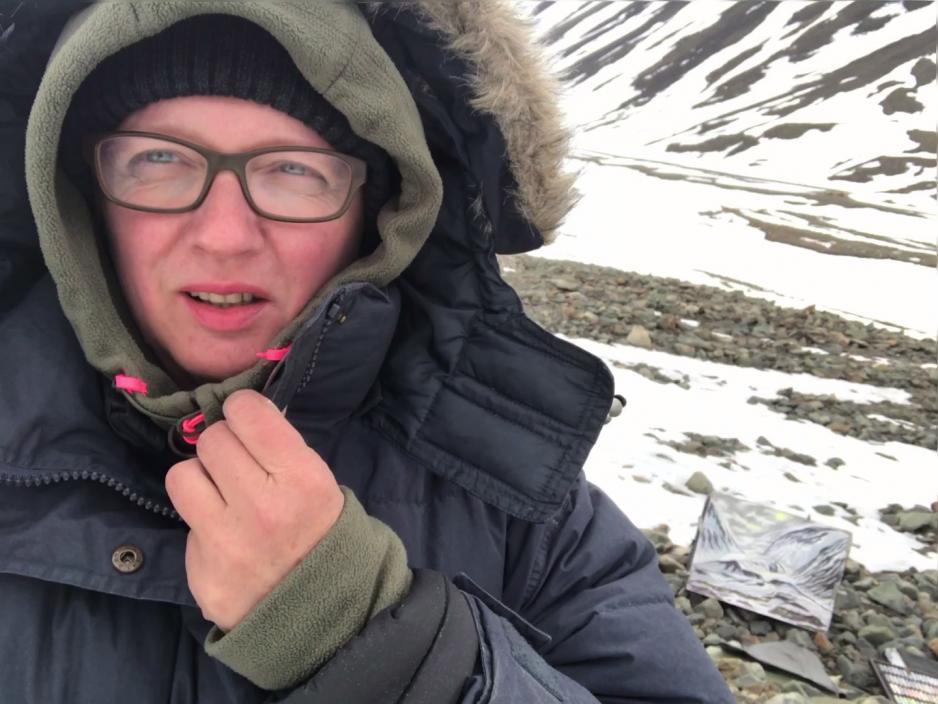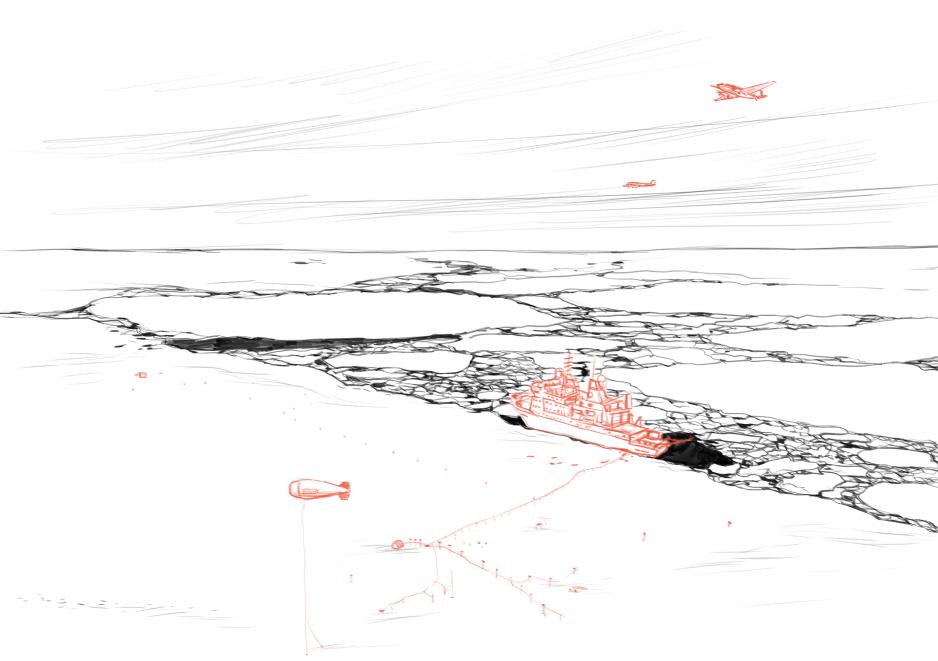Climate Science Stories in Portraits

Kerstin Heymach aims for a radical different view on climate science from an artistic perspective. As an expedition illustrator to the climate science expedition (AC)3, she documented the research processes and researchers with illustrations, drawings and interviews.
In June 2017, the graphic designer and artist Kerstin Heymach accompanied climate scientists on parts of the expedition (AC)3, which came to Svalbard on board the Polarstern. In her new book "Climate Recording", which was recently published, she gives detailed insights into the scientists’ work, their approaches and motivations.
The (AC)3 project examines the "Arctic Amplification", the intensification of climate change in the Arctic. "This observational campaign was one of the biggest, combined German expeditions in the Arctic," the book points out.
Specifically, the scientists investigated the importance of clouds in the rapid decline of Arctic sea ice. "The clouds cause a positive feedback mechanism. It becomes warmer, there is more moisture," explains Andreas Macke, director of the Leibniz Institute for Tropospheric Research.
Portraying the scientists behind the science
Whereas Heymach’s original plan merely included drawings and paintings during the expedition, she felt that there was something missing from the story: the individuals and the work behind the expedition. Not satisfied with the story that her landscape paintings tell, she started interviewing the scientists, making portraits and illustrations of typical work process, so that the reader gets a better grasp of "how it really is here."
Few artists working on the Arctic actually focus on the scientists and the science behind climate-related discoveries. "It is very tough work that they do," says Heymach, "but at the same time, they need to be creative."
Interviews help understanding work processes
Through the interviews, she also captured the view from the ground on how it is to do research in the Arctic, where climate change and weather, geopolitical tensions, infrastructural challenges and very close interpersonal relations quickly can have a significant impact on the research.
Heymach tells: "The authentic interviews are included in full in the bilingual book, because I found it fascinating how scientists perceive and talk about their work." As an outsider to the scientific work done there, it was also a good way for Heymach to understand the work processes.

"No task for lone-fighters"
Even though the mission to better understand our planet is prominent for the team, people and human contact is still crucial. Rex argues: "Anybody who tries to do Arctic research as an individual will fail."
And because humans are scattered far and wide, everybody contributes. "The teamwork is excellent," clarifies Rex. "We have colleagues who have sometimes spent weeks and months together in one of the loneliest places on Earth," he says. But still, "people talk about their work a lot."
Moved by climate change
However, what struck her most was the different motivations behind the scientists’ work. While a few were very passionate advocates for fighting climate change, others were mostly interested in the scientific part of their work and didn’t see a thorough advocacy as part of their job.
Nevertheless, the enthusiasm about the expedition, its mission and also the equipment was visible in all of the participants. "Polar research without a tethered balloon is possible, but senseless,” Macke joked after the balloon for taking measurements "died" during the expedition.
"When the Arctic was still the Arctic and made of ice and snow"
The scientists have all witnessed changes on Svalbard as a result of climate change. Markus Rex, head for Atmospheric Physics at the Alfred Wegener Institute remembers: "The fjord has not frozen over in many years. It is now an entirely different world."
Heymach was particularly shocked by the way avalanches have affected the Svalbard archipelago. Longyearbyen has also seen more avalanches in the last years. Two years ago, two people were killed through a massive avalanche that destroyed many houses.
One woman was rescued in the nick of time. "She survived the avalanche, because she found a pocket in which there was still air," recalls Knudsen, a climate researcher, who was part of the expedition. "This avalanche was something completely new that had never been experienced before. Because it was always so cold, there were no avalanches."

Not enough research done on the central Arctic
While there have been huge advances in climate science, some areas are still under-researched. Rex reveals: "Because of the inaccessibility, we lack a great deal of understanding of the climate processes that take place throughout the year in the central Arctic."
He adds: "Although you can calculate a lot and can express it wonderfully with equations, understanding is still missing." This also puts humans in their place. Rex explains: "When traversing Berlin, you always think that humans are the most important thing on the planet. This seems very different in the Arctic or Antarctic."
Strong economic growth despite lack of knowledge
At the same time, driven by expectations of a continuously warming Arctic, it "is currently one of the most dynamic economic areas on earth. The growth rates of economic activity here are well above the global average," Rex says.
Despite lack of detailed knowledge, this entails infrastructure development. According to Rex, "Investment [in Arctic infrastructure] is happening without knowing exactly where it will be getting warm, how warm it will be, during what seasons it will get warmer and where the sea ice will retreat."
Reaching out to children
Motivated by a story from the pilot of a polar research aircraft, who pursued his dreams and became a pilot after reading the children’s book "Ben, the little pilot", her next project might be a children’s book to make them better understand climate change.
